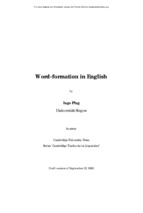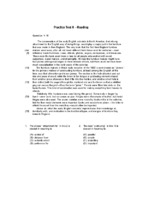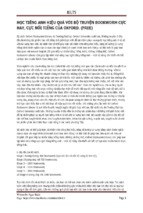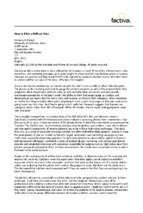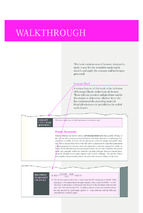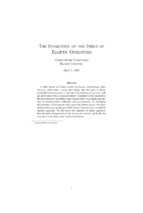New Biotechnologies for Increased Energy Security : The Future of Fuel
future's large-scale production of biofuels. Biomass is an abundant carbon-
The
information
ininthis
compendium
volume
sets
the
for
The
Future
of contained
Fuel
neutral
renewable
feedstock
for
producing
fuel.
First-generation
biofuels
gained
The
information
contained
this
compendium
volume
setssets
thestage
stage
forthe
thethe
The
information
contained
in this
compendium
volume
the
stage
for
90000
ISBN:
978-1-77188-146-3
ISBN:
978-1-77188-146-3
99
00
00
00
00
ISBN:
978-1-77188-146-3
90000
ISBN: 978-1-77188-146-3
90000
9 781 771 88 146 3
9 9781
771
88
146
33
781
771771
88
146
9 781
88 146
3
www.appleacademicpress.com
9 781 771 88 146 3
New Biotechnologies for Increased Energy Security
ISBN: 978-1-77188-146-3
New
Biotechnologies
for
Increased
Security
New
Biotechnologies
for
Increased
Energy
Security
Thefor
Future
of FuelEnergy
New
Biotechnologies
Increased
Energy
Security
The The
Future
of
Fuel
Future
ofIncreased
Fuel
New Biotechnologies
for
Energy Security
The Future
of
Fuel
The Future of Fuel
future's
large-scale
ofofbiofuels.
Biomass
isis
ananabundant
carbonattention
for their production
problems—but
the
authors
of this
book
demonstrate
that they
future's
large-scale
production
biofuels.
Biomass
carbonfuture's
large-scale
production
of biofuels.
Biomass
is abundant
an abundant
carbonneutral
renewable
feedstock
for
producing
fuel.
First-generation
biofuels
gained
are
well
on
their
way
to
creating
practical
and
sustainable
second-generation
neutral
renewable
feedstock
for
producing
fuel.
First-generation
biofuels
gained
Theattention
information
contained
in this compendium
volume
sets
the
stage forbiofuels
the
neutral
renewable
feedstock
for authors
producing
fuel.
First-generation
gained
for
their
problems—but
the
of
this
book
demonstrate
that
they
biofuels.
attention
for
their
problems—but
the
authors
of
this
book
demonstrate
that
they
future's
large-scale
production
of
biofuels.
Biomass
is
an
abundant
carbonattention
for
their
problems—but
the
authors
of
this
book
demonstrate
that
they
are
way
practical
and sustainable
second-generation
arewell
wellon
ontheir
their
wayto
tocreating
creating
practical
sustainable
second-generation
neutral
renewable
for
producing
fuel.and
First-generation
biofuels
gained
are
well
onfeedstock
their
way
to creating
practical
and
sustainable
second-generation
biofuels.
The for
book
begins
with an introduction
toof
synthetic
biology.
Next, itthat
covers:
biofuels.
attention
their
problems—but
the authors
this book
demonstrate
they
biofuels.
•
pretreatment
technologies
are The
well book
on their
way
to
creating
practical
and
sustainable
second-generation
begins
with
ananintroduction
totosynthetic
biology.
Next,
it itcovers:
• advanced
microbial
technologies
The
book
begins
with
introduction
synthetic
biology.
Next,
covers:
biofuels.
The
book
begins
with
an introduction
to synthetic
biology.
Next,
it covers:
• •• pretreatment
technologies
genetic engineering
as it relates to biofuel technologies
pretreatment
technologies
•
pretreatment
technologies
• •• advanced
microbial
technologies
nanotechnology
and
chemical
in relation
microbial
technologies
The• book
begins
with
an introduction
toengineering
synthetic
biology.
Next,toitbiofuels
covers:
•advanced
advanced
microbial
genetic
engineering
asasittechnologies
relates
to
technologies
• •genetic
engineering
itas
relates
tobiofuel
biofuel
technologies
• •pretreatment
technologies
genetic
engineering
it
relates
to
biofuel
technologies
nanotechnology
and
chemical
engineering
in
relation
to
biofuels
in his
field,
the editor's
firsthandinexperience
him the
•Well-respected
and
chemical
engineering
relation
to gives
biofuels
• advanced
microbial
technologies
•nanotechnology
nanotechnology
and
chemical
engineering
in relation
to biofuels
perspective
to
create
a
thorough
review
of
the
relevant
literature.
Each
chapter
• Well-respected
genetic engineering
as
it relates
to biofuel
technologies
ininhis
field,
the
editor's
firsthand
experience
gives
him
the
is
written
by
experts
in
biotechnologies,
offering
graduate
and
post-doctorate
Well-respected
his
field,
the
editor's
firsthand
experience
gives
him
the
• perspective
nanotechnology
andinchemical
in relation
toliterature.
biofuelsgives
Well-respected
his
field,engineering
the
editor's
firsthand
experience
him the
toto
create
review
ofofthe
relevant
Each
students, as
well
as aother
scientific
researchers,
a wide-angle
look
at chapter
biofuel
perspective
create
athorough
thorough
review
the
relevant
literature.
Each
chapter
perspective
to
create
a
thorough
review
of
the
relevant
literature.
Each
chapter
isis
written
bybyexperts
inin
biotechnologies,
offering
graduate
and
post-doctorate
technologies.
Atfield,
the
same
time, this
volume
points
to promising
directions
for
written
experts
biotechnologies,
offering
graduate
and
post-doctorate
Well-respected
in
his
the
editor's
firsthand
experience
gives
him
the
is
written
by
experts
in
biotechnologies,
offering
graduate
and
post-doctorate
students,
asaswell
asasother
scientific
researchers,
a awide-angle
look
atatbiofuel
new
research.
students,
well
other
scientific
researchers,
wide-angle
look
biofuel
perspective
to create
a thorough
review
of the
relevant
literature.
Each
chapter
students,
as the
well
as other
scientific
researchers,
a wide-angle
look
at biofuel
technologies.
At
same
time,
this
points
to
directions
for
technologies.
Atinthe
same
time,
thisvolume
volume
points
topromising
promising
directions
for for
is written
by
experts
biotechnologies,
offering
graduate
and
post-doctorate
technologies.
At
the
same
time,
this
volume
points
to
promising
directions
new
research.
ABOUT
THE
EDITOR
newnew
research.
students,
as well
as
other
scientific
researchers,
a
wide-angle
look
at
biofuel
research.
Dr. Juan
Carlos
Serrano
Ruiz
is currently
a Senior
Research Scientist
Abengoa
technologies.
At EDITOR
the same
time,
this
volume points
to promising
directionsatfor
ABOUT
THE
ABOUT
THE
EDITOR
Research
inTHE
Seville,
Spain. He is licensed in Chemical Sciences by the University
new research.
ABOUT
EDITOR
Dr.
Carlos
Serrano
isiscurrently
a aSenior
Research
at
ofJuan
Granada,
Spain,
andRuiz
received
his PhD
inSenior
Chemistry
andScientist
Material
Science
from
Dr.
Juan
Carlos
Serrano
Ruiz
currently
Research
Scientist
atAbengoa
Abengoa
Dr.
Juan
Carlos
Serrano
Ruiz
is currently
a Senior
Research
Scientist
at Abengoa
Research
ininSeville,
Spain.
He
isislicensed
Chemical
Sciences
by
the
theTHE
University
of Alicante,
Spain.
He hasinvisited
many
laboratories
allUniversity
around
the
ABOUT
EDITOR
Research
Seville,
Spain.
He
licensed
in
Chemical
Sciences
by
the
University
Research
in Seville,
Spain. He
isPhD
licensed
in Chemical
SciencesScience
by the University
ofof
Granada,
Spain,
and
received
his
inin
Chemistry
and
Material
from
world
in
his
research
on
biofuel.
He
was
a
Fulbright
Student
at
the
University
of
Granada,
Spain,
and
received
his
PhD
Chemistry
and
Material
Science
from
Dr. Juan
Carlos
Serrano
Ruiz
isSpain.
currently
a
Senior
Research
Scientist
atall
Abengoa
of
Granada,
Spain,
and
received
his
PhD
in
Chemistry
and Material
Science
from
the
University
ofof
Alicante,
He
visited
many
laboratories
around
the
Wisconsin-Madison,
USA,
where
hehas
studied
catalytic
conversion
ofallbiomass.
the
University
Alicante,
Spain.
He
has
visited
many
laboratories
around
the
Research
in
Seville,
Spain.
He
is
licensed
in
Chemical
Sciences
by
the
University
the
University
of on
Alicante,
Spain.
Heahas
visitedStudent
many laboratories
all around
the
world
in
his
research
biofuel.
He
was
Fulbright
at
the
University
of
Upon in
his
return
toreceived
Spain,
he
accepted
work
at the
Department
of Organic
world
his
research
on biofuel.
He He
was
a Fulbright
Student
atScience
the
University
of Granada,
Spain,
and
his
PhD
in
Chemistry
and
Material
from of of
world
in his
research
on
biofuel.
was
a Fulbright
Student
at
the
University
Wisconsin-Madison,
USA,
where
he
studied
catalytic
conversion
of
biomass.
Chemistry
the University
of Cordoba,
where
helaboratories
hasconversion
continued
his
work
with
Wisconsin-Madison,
USA,
where
hevisited
studied
catalytic
of biomass.
the Upon
University
ofatAlicante,
Spain.
He
has
many
allOrganic
around
the
Wisconsin-Madison,
USA,
where
he
studied
catalytic
conversion
of biomass.
his
return
Spain,
he
work
the
Department
of
biofuels.
He
is to
the
author
ofaccepted
more
than
fiftyatscientific
publications
in
Upon
his
return
to
Spain,
he
accepted
work
at
the
Department
of
Organic
world
in
his
research
on
biofuel.
He
was
a
Fulbright
Student
at
the
University
of
Upon his
return
to Spain,
he
accepted
work
athas
thecontinued
Department
of
Organic
Chemistry
atatthe
University
ofof
Cordoba,
where
hehe
his
work
with
international
journals,
including
an article
in Science
Magazine
on
using
sugar
Chemistry
the
University
where
has
continued
his
work
with
Wisconsin-Madison,
where
heCordoba,
studied
catalytic
conversion
of biomass.
Chemistry
atUSA,
the
University
of
Cordoba,
where
hepublications
has
continued
his
work
with
biofuels.
He
is
the
author
of
more
than
fifty
scientific
in
as
a
biofuel.
He
is
also
the
co-inventor
of
a
patent
taken
out
by
the
Wisconsin
biofuels.
He
is
the
author
of
more
than
fifty
scientific
publications
in
Upon
his
return
to
Spain,
he
accepted
work
at
the
Department
of
Organic
biofuels.
He
is
the
author
of
more
than
fifty
scientific
publications
in
international
journals,
including
anan
article
ininScience
Magazine
on
using
sugar
Alumni
Foundation
for
the
conversion
of
cellulose
into
diesel
and
international
journals,
including
article
Science
Magazine
on
using
sugar
Chemistry
at Research
theHe
University
of Cordoba,
where
has
continued
his
work
journals,
including
anofarticle
in Science
Magazine
onwith
using
sugar
asas
a ainternational
biofuel.
isis
also
the
co-inventor
a ahe
patent
taken
out
by
the
Wisconsin
gasoline.
biofuel.
He
also
the
co-inventor
of
patent
taken
out
by
the
Wisconsin
biofuels.
He
is
the
author
of
more
than
fifty
scientific
publications
in
as
a
biofuel.
He
is
also
the
co-inventor
of
a
patent
taken
out
by
the
Wisconsin
Alumni
Research
Foundation
for
the
conversion
of
cellulose
into
diesel
and
Alumni
Research
Foundation
thethe
conversion
of cellulose
diesel
andand
international
journals,
including
an for
article
in Science
Magazine
oninto
using
sugar
Alumni
Research
Foundation
for
conversion
of cellulose
into
diesel
gasoline.
gasoline.
as a biofuel.
He
is
also
the
co-inventor
of
a
patent
taken
out
by
the
Wisconsin
gasoline.
Alumni Research Foundation for the conversion of cellulose into diesel and
gasoline.
Serrano-Ruiz
The
Future
ofof
Fuel
The
Future
Fuel
New
Biotechnologies
Increasedvolume
Energy
Security
The
information
contained
infor
this compendium
sets the
stage for the
The
Future
of
Fuel
Serrano-Ruiz
Serrano-Ruiz
Serrano-Ruiz
Serrano-Ruiz
New Biotechnologies for Increased Energy Security
New
Biotechnologies
for
Increased
Energy
Security
The
Future
of Fuel
New
Biotechnologies
forfor
Increased
Energy
Security
New
Biotechnologies
Increased
Energy
Security
New Biotechnologies
New
Biotechnologies
New
Biotechnologies
New
Biotechnologies
for
Increased
New
Biotechnologies
for
Increased
for
Increased
for
Increased
Energy
Security
for
Increased
Energy
Security
Energy
Security
Energy
Security
The Future
of Fuel
Energy
Security
The Future of Fuel
The
TheFuture
FutureofofFuel
Fuel
The Future of Fuel
Editor Juan Carlos Serrano-Ruiz, PhD
Editor
Juan
Carlos
Serrano-Ruiz,
PhD
Editor
Juan
Carlos
Serrano-Ruiz,
PhD
Editor
Juan
Carlos
Serrano-Ruiz,
PhD
Editor Juan Carlos Serrano-Ruiz, PhD
NEW BIOTECHNOLOGIES FOR
INCREASED ENERGY SECURITY
The Future of Fuel
NEW BIOTECHNOLOGIES FOR
INCREASED ENERGY SECURITY
The Future of Fuel
Edited by
Juan Carlos Serrano-Ruiz, PhD
CRC Press
Taylor & Francis Group
6000 Broken Sound Parkway NW, Suite 300
Boca Raton, FL 33487-2742
Apple Academic Press, Inc
3333 Mistwell Crescent
Oakville, ON L6L 0A2
Canada
© 2015 by Apple Academic Press, Inc.
Exclusive worldwide distribution by CRC Press an imprint of Taylor & Francis Group, an Informa
business
No claim to original U.S. Government works
Version Date: 20150513
International Standard Book Number-13: 978-1-77188-236-1 (eBook - PDF)
This book contains information obtained from authentic and highly regarded sources. Reasonable efforts have been made to publish reliable data and information, but the author and publisher
cannot assume responsibility for the validity of all materials or the consequences of their use. The
authors and publishers have attempted to trace the copyright holders of all material reproduced in
this publication and apologize to copyright holders if permission to publish in this form has not
been obtained. If any copyright material has not been acknowledged please write and let us know so
we may rectify in any future reprint.
Except as permitted under U.S. Copyright Law, no part of this book may be reprinted, reproduced,
transmitted, or utilized in any form by any electronic, mechanical, or other means, now known or
hereafter invented, including photocopying, microfilming, and recording, or in any information
storage or retrieval system, without written permission from the publishers.
For permission to photocopy or use material electronically from this work, please access www.
copyright.com (http://www.copyright.com/) or contact the Copyright Clearance Center, Inc.
(CCC), 222 Rosewood Drive, Danvers, MA 01923, 978-750-8400. CCC is a not-for-profit organization that provides licenses and registration for a variety of users. For organizations that have been
granted a photocopy license by the CCC, a separate system of payment has been arranged.
Trademark Notice: Product or corporate names may be trademarks or registered trademarks, and
are used only for identification and explanation without intent to infringe.
Visit the Taylor & Francis Web site at
http://www.taylorandfrancis.com
and the CRC Press Web site at
http://www.crcpress.com
For information about Apple Academic Press product
http://www.appleacademicpress.com
ABOUT THE EDITOR
JUAN CARLOS SERRANO-RUIZ
Juan Carlos Serrano-Ruiz studied Chemistry at the University of Granada
(Spain). In 2001 he moved to the University of Alicante (Spain) where he
received a PhD in Chemistry and Materials Science in 2006. In January
2008, he was awarded a MEC/Fulbright Fellowship to conduct studies
on catalytic conversion of biomass in James Dumesic’s research group
at the University of Wisconsin-Madison (USA). He is (co)author of over
50 manuscripts and book chapters on biomass conversion and catalysis.
He is currently Senior Researcher at Abengoa Research, the research and
development division of the Spanish company, Abengoa (Seville, Spain).
CONTENTS
Acknowledgment and How to Cite ............................................................. ix
List of Contributors .................................................................................... xi
Introduction ................................................................................................xv
Part I: The Premise
1.
Synthetic Biology: A Promising Technology for Biofuel Production ..... 3
Kamaljeet Kaur Sekhon and Pattanathu K. S. M. Rahman
Part II: Pretreatment Technologies
2.
Efficient Extraction of Xylan from Delignified Corn Stover Using
Dimethyl Sulfide.......................................................................................... 9
John Rowley, Stephen R. Decker, William Michener,
and Stuart Black
3.
Process Modeling of Enzymatic Hydrolysis of Wet-Exploded
Corn Stover ............................................................................................... 21
Vandana Rana, Diwakar Rana, and Birgitte K. Ahring
4.
Bioconversion of Lignocellulose: Inhibitors and Detoxification .......... 41
Leif J. Jönsson, Björn Alriksson, and Nils-Olof Nilvebrant
Part III: Advanced Microbial Technologies
5.
Microbial Production of Sabinene—A New Terpene-Based
Precursor of Advanced Biofuel ................................................................ 67
Haibo Zhang, Qiang Liu, Yujin Cao, Xinjun Feng, Yanning Zheng, Huibin Zou,
Hui Liu, Jianming Yang, and Mo Xian
6.
From Biodiesel and Bioethanol to Liquid Hydrocarbon Fuels:
New Hydrotreating and Advanced Microbial Technologies ................ 91
Juan Carlos Serrano-Ruiz, Enrique V. Ramos-Fernández,
and Antonio Sepúlveda-Escribano
7.
Synthetic Routes to Methylerythritol Phosphate Pathway
Intermediates and Downstream Isoprenoids ....................................... 125
Sarah K. Jarchow-Choy, Andrew T. Koppisch, and David T. Fox
viii
Contents
Part IV: Genetic Engineering
8.
Metabolic Process Engineering for Biochemicals and Biofuels.......... 179
Shang-Tian Yang and Xiaoguang Liu
9.
Enhanced Genetic Tools for Engineering Multigene Traits into
Green Algae ............................................................................................. 187
Beth A. Rasala, Syh-Shiuan Chao, Matthew Pier, Daniel J. Barrera, and
Stephen P. Mayfield
10. Development of A Broad-Host Synthetic Biology Toolbox for
Ralstonia eutropha and Its Application to Engineering Hydrocarbon
Biofuel Production .................................................................................. 207
Changhao Bi, Peter Su, Jana Müller, Yi-Chun Yeh, Swapnil R. Chhabra,
Harry R. Beller, Steven W. Singer, and Nathan J. Hillson
Part V: Nanotechnology and Chemical Engineering
11. Heterogeneous Photocatalytic Nanomaterials: Prospects
and Challenges in Selective Transformations of
Biomass-Derived Compounds ............................................................... 229
Juan Carlos Colmenares and Rafael Luque
12. Development of Mesoscopically Assembled Sulfated Zirconia
Nanoparticles as Promising Heterogeneous and Recyclable
Biodiesel Catalysts .................................................................................. 263
Swapan K. Das and Sherif A. El-Safty
13. Kinetic Study on the CsXH3−X PW12O40/Fe-SiO2 Nanocatalyst
for Biodiesel Production ......................................................................... 291
Mostafa Feyzi, Leila Norouzi, and Hamid Reza Rafiee
Author Notes.................................................................................................... 307
Index ................................................................................................................. 311
ACKNOWLEDGMENT AND
HOW TO CITE
The editor and publisher thank each of the authors who contributed to this
book. The chapters in this book were previously published elsewhere. To
cite the work contained in this book and to view the individual permissions, please refer to the citation at the beginning of each chapter. Each
chapter was read individually and carefully selected by the editor; the result is a book that provides a nuanced look at the intersection between developing biotechnologies and the future of our energy security. The chapters included examine the following topics:
• The editorial found in chapter 1 is a good introduction to the urgent relevancy of this topic.
• In chapter 2, Rowley and his colleagues determine methodology for improving the efficiency of extracting xylan from corn stover using dimethyl
sulfoxide combined with heat, significant because of third-generation bioenergy’s focus on non-food biomass stock.
• Chapter 3 contains an investigation by Rana et al. of pretreatment methods
and enzymatic hydrolysis for producing higher glucose yields from corn
stover as a biomass for bioenergy conversion.
• In chapter 4, we have research that supports acid-catalyzed thermochemical pretreatment of lignocellulosic feedstocks as a simple and inexpensive
approach for pretreatment that efficiently improves the susceptibility to cellulolytic enzymes, even for more recalcitrant types of lignocellulose.
• Zhang and colleagues found in chapter 5 that sabinene was significantly
produced by assembling a biosynthetic pathway and evaluated other methodologies for optimizing sabinene production.
• In chapter 6, my colleagues and I investigated technologies that indicate
that advanced biofuels such as green hydrocarbons represent an attractive
alternative to conventional bioethanol and biodiesel.
• Because isoprenoids are an excellent illustration of the chemical diversity
and unique biochemical roles that are possible within members of a single
molecular family, in chapter 7, Jarchow-Choy and her colleagues investigate these structures and their roles, particularly in terms of synthetic methodologies and enzymological studies.
x
Acknowledgment and How to Cite
• Yang and Liu MPE discuss in chapter 8 metabolic process engineering’s
role in an efficient fermentation process for biochemical and biofuel production.
• In chapter 9, Rasala and her colleagues report the construction and validation of a set of transformation vectors that enable protein targeting to distinct subcellular locations; they then present two complementary methods
for multigene engineering in the eukaryotic green microalga C. reinhardtii,
a viable option for biofuel production.
• Because R. eutropha has great potential to directly produce biofuels, Bi and
colleagues demonstrate in chapter 10 the engineering utility of a plasmidbased toolbox for R. eutropha.
• In chapter 11, Colmenares and Luque provide an overview of recent investigations into selective photochemical transformations using nanomaterials, particularly focused on photocatalysis for lignocellulose-based biomass
valorization as an important option for sustainable energy production.
• Das and El-Safty investigate in chapter 12 integrating sulfate into the development of zirconium nanoparticles, concluding that this offers an excellent
heterogeneous biodiesel catalyst for the effective conversion of long-chain
fatty acids to their methyl esters, a process vital for the production of certain
bioefuels.
• Chapter 13 provides us with the investigation of Feyzi and colleagues into
sunflower oil transesterification with methanol.
LIST OF CONTRIBUTORS
Birgitte K. Ahring
Bioproducts, Sciences and Engineering Laboratory (BSEL), Washington State University, 2710 Crimson Way, Richland, WA 99354-1671, USA
Björn Alriksson
Processum Biorefinery Initiative AB, Örnsköldsvik, SE-891 22, Sweden
Daniel J. Barrera
California Center for Algae Biotechnology and Division of Biological Sciences, University of California San Diego, La Jolla, California, United States of America
Harry R. Beller
Earth Sciences Division, Lawrence Berkeley National Laboratory, Berkeley, CA 94720, USA
Changhao Bi
Physical Biosciences Division, Lawrence Berkeley National Laboratory, Berkeley, CA 94720, USA;
Present address: Tianjin Institute of Biotechnology, Chinese Academy of Sciences, Tianjin, China
Stuart Black
National Renewable Energy Laboratory, Golden, CO, USA
Yujin Cao
CAS Key Laboratory of Biobased Materials, Qingdao Institute of Bioenergy and Bioprocess Technology, Chinese Academy of Sciences, No.189 Songling Road, Qingdao, Laoshan District 266101, China
Syh-Shiuan Chao
California Center for Algae Biotechnology and Division of Biological Sciences, University of California San Diego, La Jolla, California, United States of America
Swapnil R. Chhabra
Physical Biosciences Division, Lawrence Berkeley National Laboratory, Berkeley, CA 94720, USA
Juan Carlos Colmenares
Institute of Physical Chemistry, Polish Academy of Sciences, ul. Kasprzaka 44/52, 01-224 Warsaw,
Poland.
Swapan K. Das
National Institute for Materials Science (NIMS), 1-2-1 Sengen, Tsukuba, Ibaraki 305-0047 (Japan),
Fax: (+81) 29-859-2501
Stephen R. Decker
National Renewable Energy Laboratory, Golden, CO, USA
Sherif A. El-Safty
National Institute for Materials Science (NIMS), 1-2-1 Sengen, Tsukuba, Ibaraki 305-0047 (Japan),
Fax: (+81) 29-859-2501; Graduate School for Advanced Science and Engineering, Waseda University,
3-4-1 Okubo, Shinjuku-ku, Tokyo 169-8555 (Japan)
xii
List of Contributors
Xinjun Feng
CAS Key Laboratory of Biobased Materials, Qingdao Institute of Bioenergy and Bioprocess Technology, Chinese Academy of Sciences, No.189 Songling Road, Qingdao, Laoshan District 266101, China
Mostafa Feyzi
Faculty of Chemistry, Razi University, P.O. Box 6714967346, Kermanshah, Iran; Nanoscience &
Nanotechnology Research Center (NNRC), Razi University, P.O. Box 6714967346, Kermanshah, Iran
David T. Fox
Los Alamos National Laboratory, USA
Nathan J. Hillson
Physical Biosciences Division, Lawrence Berkeley National Laboratory, Berkeley, CA 94720, USA
Sarah K. Jarchow-Choy
Los Alamos National Laboratory, USA
Leif J. Jönsson
Department of Chemistry, Umeå University, Umeå SE-901 87, Sweden
Andrew T. Koppisch
Northern Arizona University, USA
Hui Liu
CAS Key Laboratory of Biobased Materials, Qingdao Institute of Bioenergy and Bioprocess Technology, Chinese Academy of Sciences, No.189 Songling Road, Qingdao, Laoshan District 266101, China
Qiang Liu
College of Food Science, Sichuan Agricultural University, Yaan 625014, China
Xiaoguang Liu
Department of Chemical and Biological Engineering, The University of Alabama, USA
Rafael Luque
Departamento de Quimica Organica, Universidad de Cordoba, Campus de Rabanales, Edificio Marie
Curie, E-14014, Cordoba, Spain
Stephen P. Mayfield
California Center for Algae Biotechnology and Division of Biological Sciences, University of California San Diego, La Jolla, California, United States of America
William Michener
National Renewable Energy Laboratory, Golden, CO, USA
Jana Müller
Physical Biosciences Division, Lawrence Berkeley National Laboratory, Berkeley, CA 94720, USA
Nils-Olof Nilvebrant
Borregaard, Sarpsborg, 1701, Norway
Leila Norouzi
Faculty of Chemistry, Razi University, P.O. Box 6714967346, Kermanshah, Iran
Matthew Pier
California Center for Algae Biotechnology and Division of Biological Sciences, University of California San Diego, La Jolla, California, United States of America
List of Contributors
xiii
Pattanathu K. S. M. Rahman
School of Science & Engineering, Technology Futures Institute, Teesside University, Middlesbrough,
UK
Hamid Reza Rafiee
Faculty of Chemistry, Razi University, P.O. Box 6714967346, Kermanshah, Iran
Diwakar Rana
Bioproducts, Sciences and Engineering Laboratory (BSEL), Washington State University, 2710 Crimson Way, Richland, WA 99354-1671, USA
Vandana Rana
Bioproducts, Sciences and Engineering Laboratory (BSEL), Washington State University, 2710 Crimson Way, Richland, WA 99354-1671, USA
Beth A. Rasala
California Center for Algae Biotechnology and Division of Biological Sciences, University of California San Diego, La Jolla, California, United States of America
John Rowley
University of Colorado, Boulder, CO, USA
Kamaljeet Kaur Sekhon
School of Science & Engineering, Technology Futures Institute, Teesside University, Middlesbrough,
UK
Steven W. Singer
Earth Sciences Division, Lawrence Berkeley National Laboratory, Berkeley, CA 94720, USA
Peter Su
Physical Biosciences Division, Lawrence Berkeley National Laboratory, Berkeley, CA 94720, USA;
Department of Chemical & Biomolecular Engineering, University of California, Berkeley, CA 94720,
USA
Mo Xian
CAS Key Laboratory of Biobased Materials, Qingdao Institute of Bioenergy and Bioprocess Technology, Chinese Academy of Sciences, No.189 Songling Road, Qingdao, Laoshan District 266101, China
Jianming Yang
CAS Key Laboratory of Biobased Materials, Qingdao Institute of Bioenergy and Bioprocess Technology, Chinese Academy of Sciences, No.189 Songling Road, Qingdao, Laoshan District 266101, China
Shang-Tian Yang
Department of Chemical and Biomolecular Engineering, The Ohio State University, USA
Yi-Chun Yeh
Physical Biosciences Division, Lawrence Berkeley National Laboratory, Berkeley, CA 94720, USA;
National Taiwan Normal University, Taipei, Taiwan
Haibo Zhang
CAS Key Laboratory of Biobased Materials, Qingdao Institute of Bioenergy and Bioprocess Technology, Chinese Academy of Sciences, No.189 Songling Road, Qingdao, Laoshan District 266101, China
Yanning Zheng
CAS Key Laboratory of Biobased Materials, Qingdao Institute of Bioenergy and Bioprocess Technology, Chinese Academy of Sciences, No.189 Songling Road, Qingdao, Laoshan District 266101, China
xiv
List of Contributors
Huibin Zou
CAS Key Laboratory of Biobased Materials, Qingdao Institute of Bioenergy and Bioprocess Technology, Chinese Academy of Sciences, No.189 Songling Road, Qingdao, Laoshan District 266101, China
INTRODUCTION
The search for sustainable energy resources is one of this century's great
challenges. Biofuels (fuels produced from biomass) have emerged as one
of the most promising renewable energy sources, offering the world a solution to its fossil-fuel addiction. They are sustainable, biodegradable, and
contain fewer contaminants than fossil fuels.
Although biofuels are rich with promise and may well be a major part
of our future energy security, there are still challenges to be met. These
will require ongoing investigations in several directions. One direction
will be determining more efficient pretreatment technologies. Another
fruitful area of research lies in advanced microbial technologies, which
can play a major role in more efficient biofuel production. Genetic and
chemical engineering research is also required, and nanotechnology has a
role to play as well. We need to develop processes and technologies that
minimize hydrogen consumption, increase overall process activity, and
gain high fuel yields.
This research is crucial to the world’s energy needs. The research gathered in this compendium contributes to this vital field of investigation.
—Juan Carlos Serrano-Ruiz
Sustainable, economic production of second-generation biofuels is of
global importance. This is the basic premise of this book, and in chapter
1, Sekhon and Rahman summarize the facts for us: major technological
hurdles remain before we will have widespread conversion of non-food
biomass into biofuel. This requires multidisciplinary teams of scientists,
technologists, and engineers working together collaboratively to carry out
research that will underpin the generation and implementation of sustainable second-generation biofuels.
In Part 2, we move on to specific research. Sabinene, one kind of monoterpene, accumulated limitedly in natural organisms, is being explored as a
xvi
Introduction
potential component for the next generation of aircraft fuels. The demand
for advanced fuels impel Rowley and his colleagues to develop biosynthetic routes for the production of sabinene from renewable sugar. In chapter 2, they report their findings that sabinene was significantly produced
by assembling a biosynthetic pathway using the methylerythritol 4-phosphate (MEP) or heterologous mevalonate (MVA) pathway combining the
GPP and sabinene synthase genes in an engineered Escherichia coli strain.
Subsequently, the culture medium and process conditions were optimized
to enhance sabinene production with a maximum titer of 82.18 mg/L. Finally, the fed-batch fermentation of sabinene was evaluated using the optimized culture medium and process conditions, which reached a maximum
concentration of 2.65 g/L with an average productivity of 0.018 g h−1 g−1
dry cells, and the conversion efficiency of glycerol to sabinene (gram to
gram) reached 3.49%. This is the first report of microbial synthesis of sabinene using an engineered E. coli strain with the renewable carbon source
as feedstock. It establishes a green and sustainable production strategy for
sabinene.
Next, in chapter 3, Rana and colleagues investigate bioconversion of
lignocellulose by microbial fermentation. This is typically preceded by an
acidic thermochemical pretreatment step designed to facilitate enzymatic
hydrolysis of cellulose. Substances formed during the pretreatment of the
lignocellulosic feedstock inhibit enzymatic hydrolysis as well as microbial
fermentation steps. Their review focuses on inhibitors from lignocellulosic
feedstocks and how conditioning of slurries and hydrolysates can be used
to alleviate inhibition problems. Novel developments in the area include
chemical in-situ detoxification by using reducing agents, and methods that
improve the performance of both enzymatic and microbial biocatalysts.
Biodiesel and bioethanol, produced by simple and well-known transesterification and fermentationtechnologies, dominate the current biofuel
market. However, their implementation in the hydrocarbon-based transport
infrastructure faces serious energy-density and compatibility issues. The
transformation of biomass into liquid hydrocarbons chemically identical
to those currently used in our vehicles can help to overcome these issues
eliminating the need to accommodate new fuels and facilitating a smooth
transition toward a low carbon transportation system. These strong incentives are favoring the onset of new technologies such as hydrotreating and
Introduction
xvii
advanced microbial synthesis, which are designed to produce gasoline,
diesel, and jet fuels from classical biomass feedstocks such as vegetable
oils and sugars. In chapter 4, Jönsson and his colleagues provide a stateof-the-art overview of these promising routes.
Xylan can be extracted from biomass using either alkali (KOH or
NaOH) or dimethyl sulfoxide (DMSO); however, DMSO extraction is the
only method that produces a water-soluble xylan. In chapter 5, DMSO
extraction of corn stover was studied at different temperatures with the objective of finding a faster, more efficient extraction method. The temperature and time of extraction were compared followed by a basic structural
analysis to ensure that no significant structural changes occurred under
different temperatures. The resulting data showed that heating to 70 °C
during extraction can give a yield comparable to room temperature extraction while reducing the extraction time by ~90 %. This method of heating
was shown to be the most efficient method currently available and was
shown to retain the important structural characteristics of xylan extracted
with DMSO at room temperature.
In chapter 6, my colleagues and I investigated the optimal process
conditions leading to high glucose yield (over 80 %) after wet explosion
(WEx) pretreatment and enzymatic hydrolysis. The study focused on determining the “sweet spot” where the glucose yield obtained is optimized
compared to the cost of the enzymes. WEx pretreatment was conducted
at different temperatures, times, and oxygen concentrations to determine
the best WEx pretreatment conditions for the most efficient enzymatic hydrolysis. Enzymatic hydrolysis was further optimized at the optimal conditions using central composite design of response surface methodology
with respect to two variables: Cellic® CTec2 loading [5 to 40 mg enzyme
protein (EP)/g glucan] and substrate concentration (SC) (5 to 20 %) at 50
°C for 72 h. The most efficient and economic conditions for corn stover
conversion to glucose were obtained when wet-exploded at 170 °C for 20
min with 5.5 bar oxygen followed by enzymatic hydrolysis at 20 % SC
and 15 mg EP/g glucan (5 filter paper units) resulting in a glucose yield
of 84 %.
Isoprenoids constitute the largest class of natural products with greater
than 55,000 identified members. They play essential roles in maintaining
proper cellular function leading to maintenance of human health and plant
xviii
Introduction
defense mechanisms against predators, and they are often utilized for their
beneficial properties in the pharmaceutical and nutraceutical industries.
Most impressively, all known isoprenoids are derived from one of two
C5-precursors, isopentenyl diphosphate (IPP) or dimethylallyl diphosphate (DMAPP). In order to study the enzyme transformations leading
to the extensive structural diversity found within this class of compounds
there must be access to the substrates. Sometimes, intermediates within
a biological pathway can be isolated and used directly to study enzyme/
pathway function. However, the primary route to most of the isoprenoid
intermediates is through chemical catalysis. In chapter 7, Jarchow-Choy
and her colleagues provide a thorough examination of synthetic routes to
isoprenoid and isoprenoid precursors with particular emphasis on the syntheses of intermediates found as part of the 2C-methylerythritol 4-phosphate (MEP) pathway. In addition, representative syntheses are presented
for the monoterpenes (C10), sesquiterpenes (C15), diterpenes (C20), triterpenes (C30) and tetraterpenes (C40). Finally, in some instances, the synthetic routes to substrate analogs found both within the MEP pathway and
downstream isoprenoids are examined.
In chapter 8, Yang and Liu introduce the focus of Part 4: the role of genetic engineering in the new biotechnologies. Metabolic process engineering (MPE) is a powerful technology that integrates the well-developed
process control techniques, such as precise bioreactor controllers and in
situ sensors, and advanced omics technologies. It enables the rational design of a bio-production process, and thus can lead to a highly efficient
fermentation process for biochemicals and biofuels production. Different from the well-known traditional fermentation process development,
MPE targets to engineer the bio-production process by controlling the cell
physiology and metabolic responses to changes in fermentation process
parameters and incorporating the interplay between cell and process into
the rational process design. Yang and Liu focus on the application of MPE
to improve biochemicals and biofuels production via precise bioreactor
controllers, in situ sensors, and omics technologies.
Transgenic microalgae have the potential to impact many diverse biotechnological industries, including energy, human and animal nutrition,
pharmaceuticals, health and beauty, and specialty chemicals. However, the
lack of well-characterized transformation vectors to direct engineered gene
- Xem thêm -


